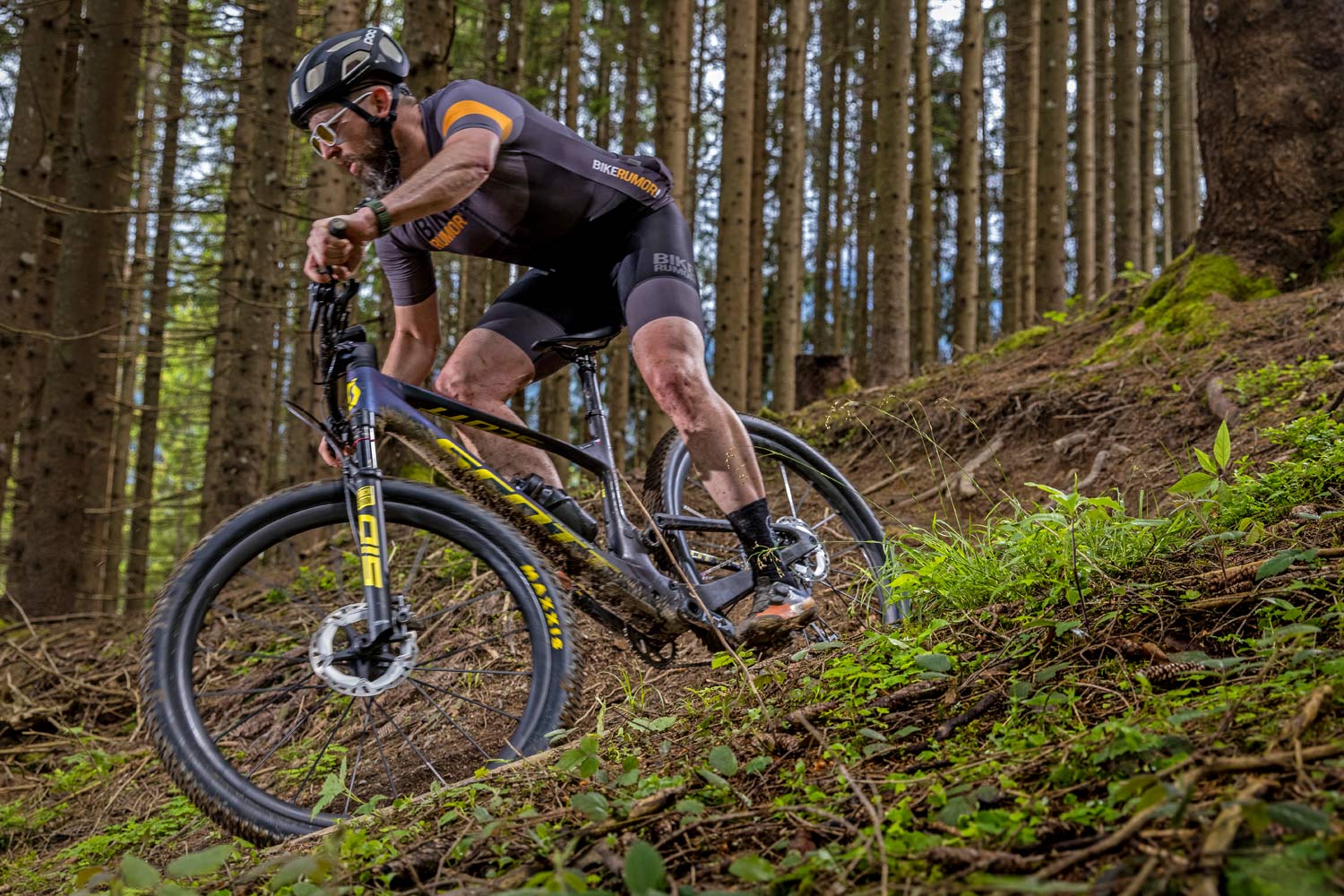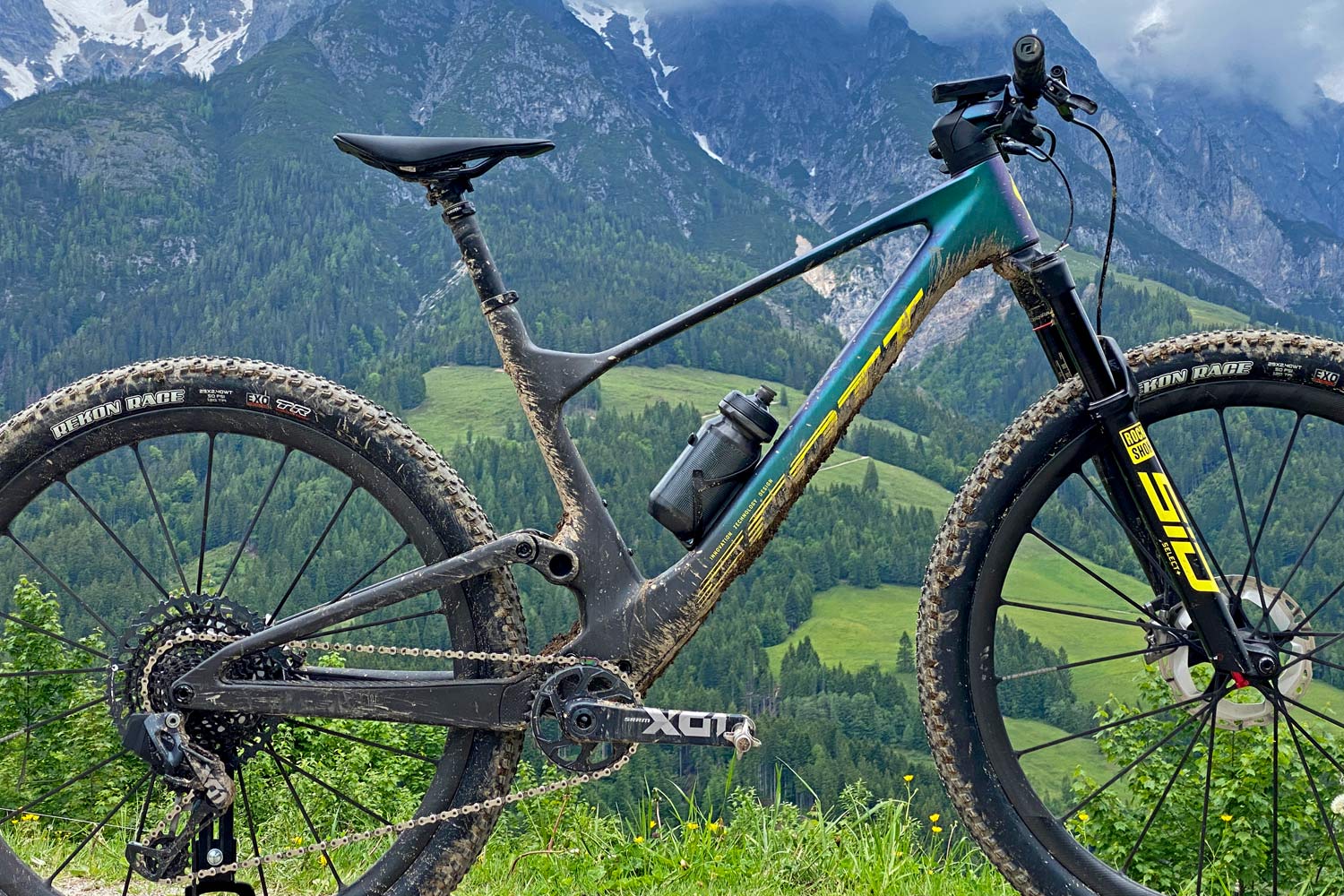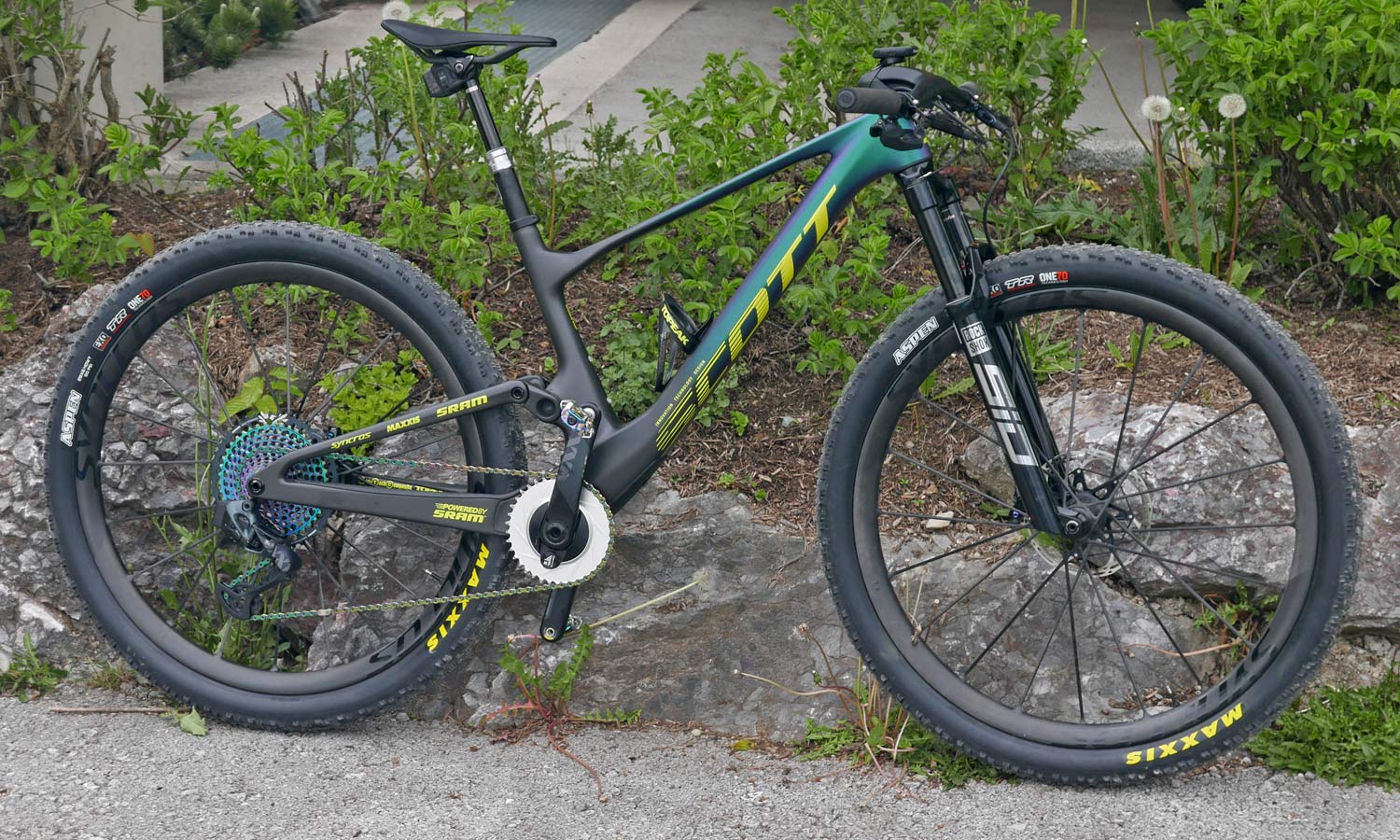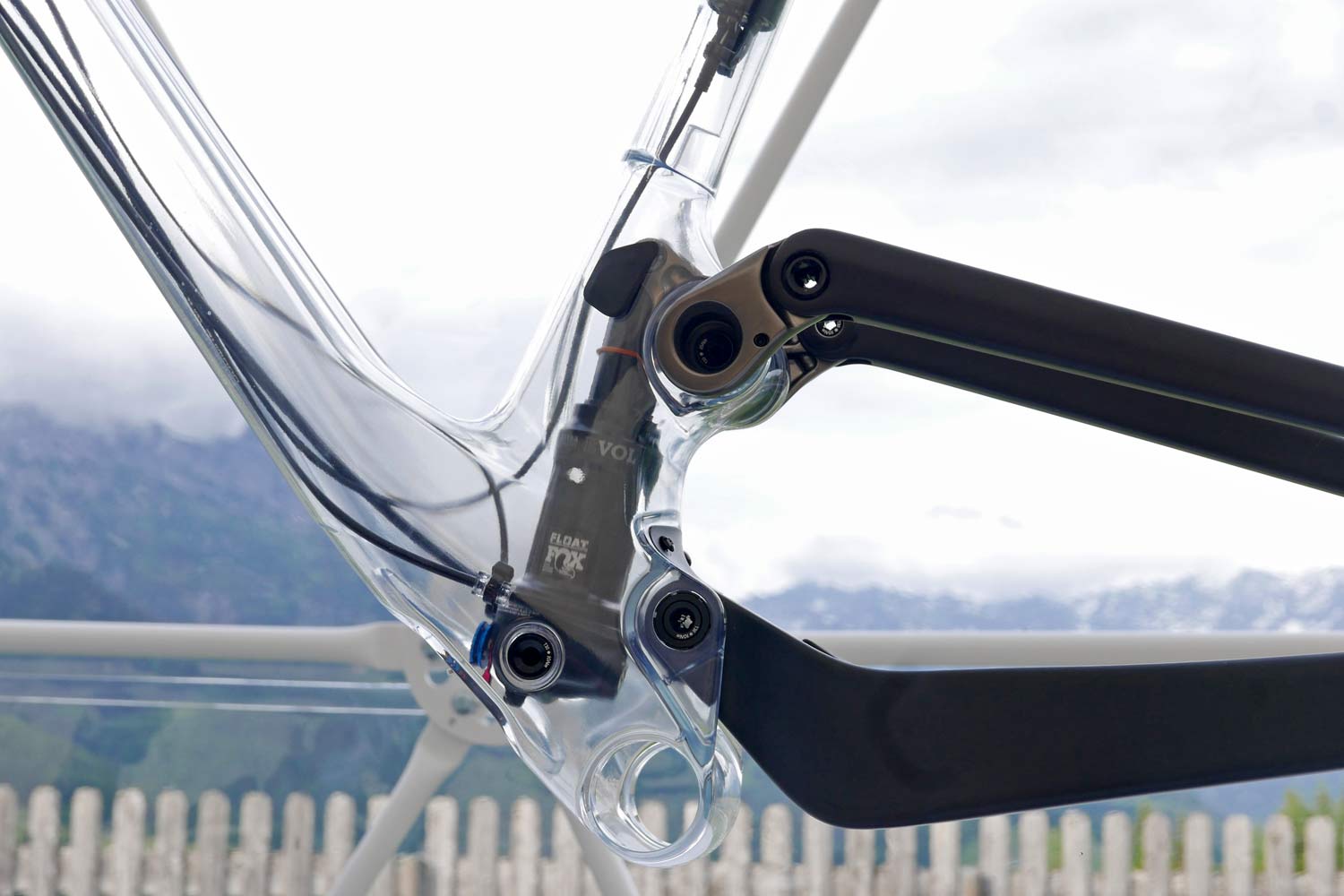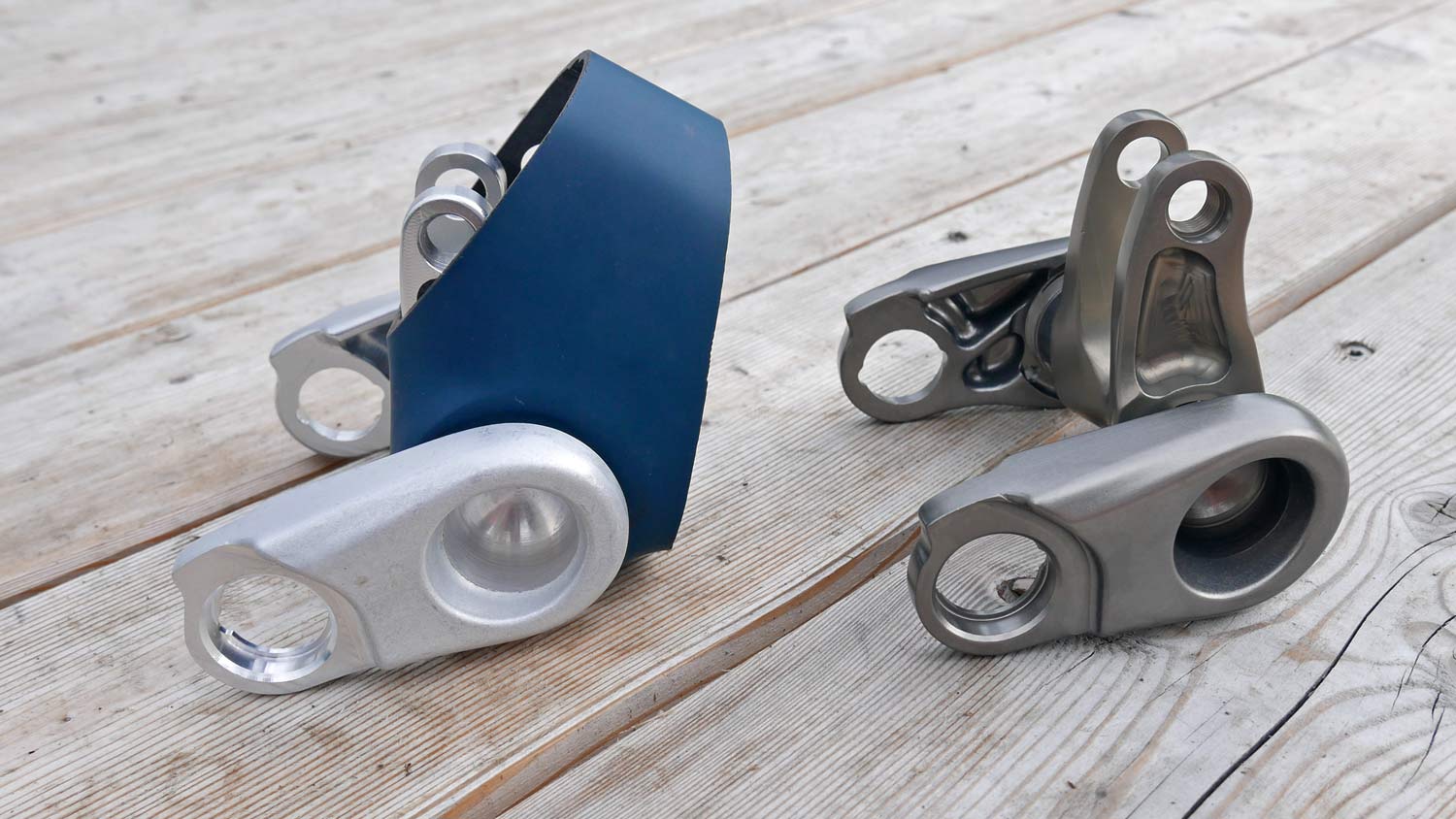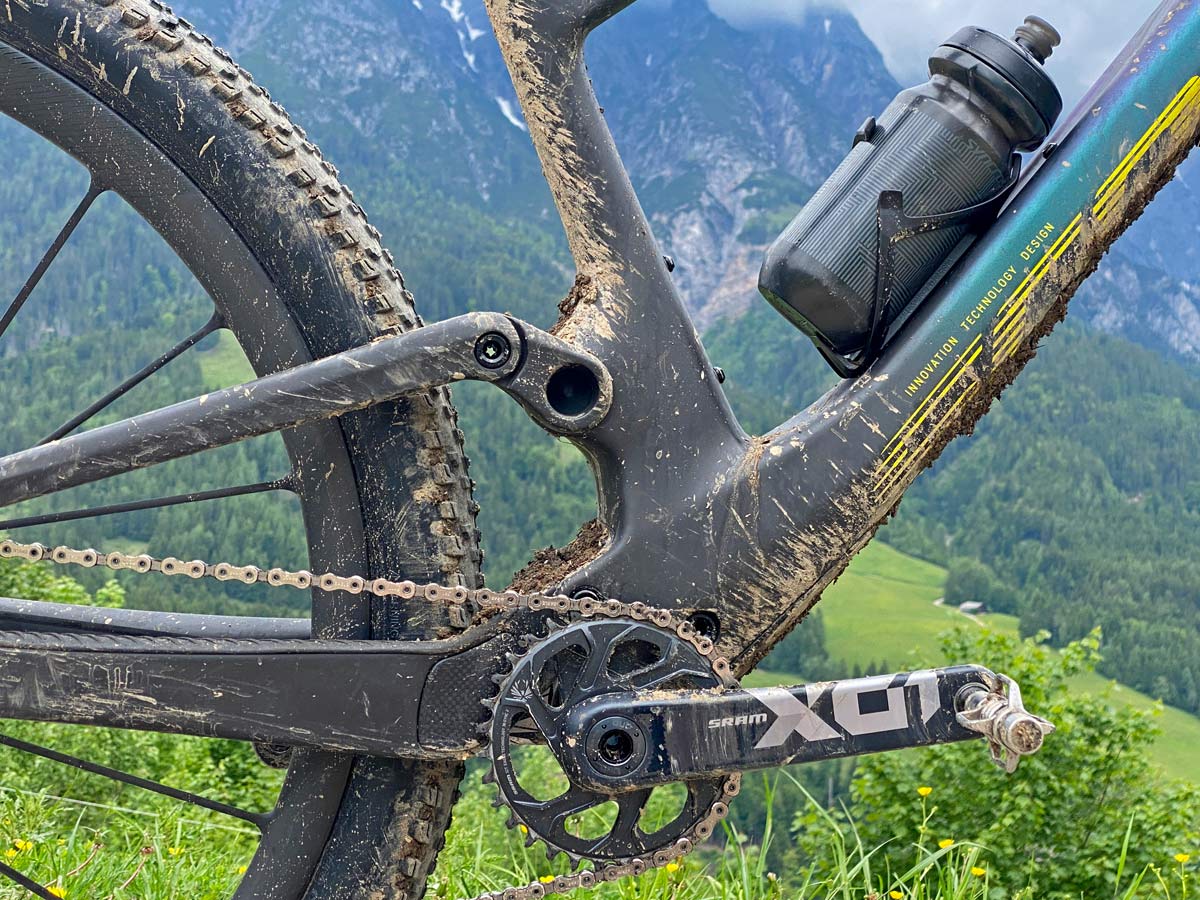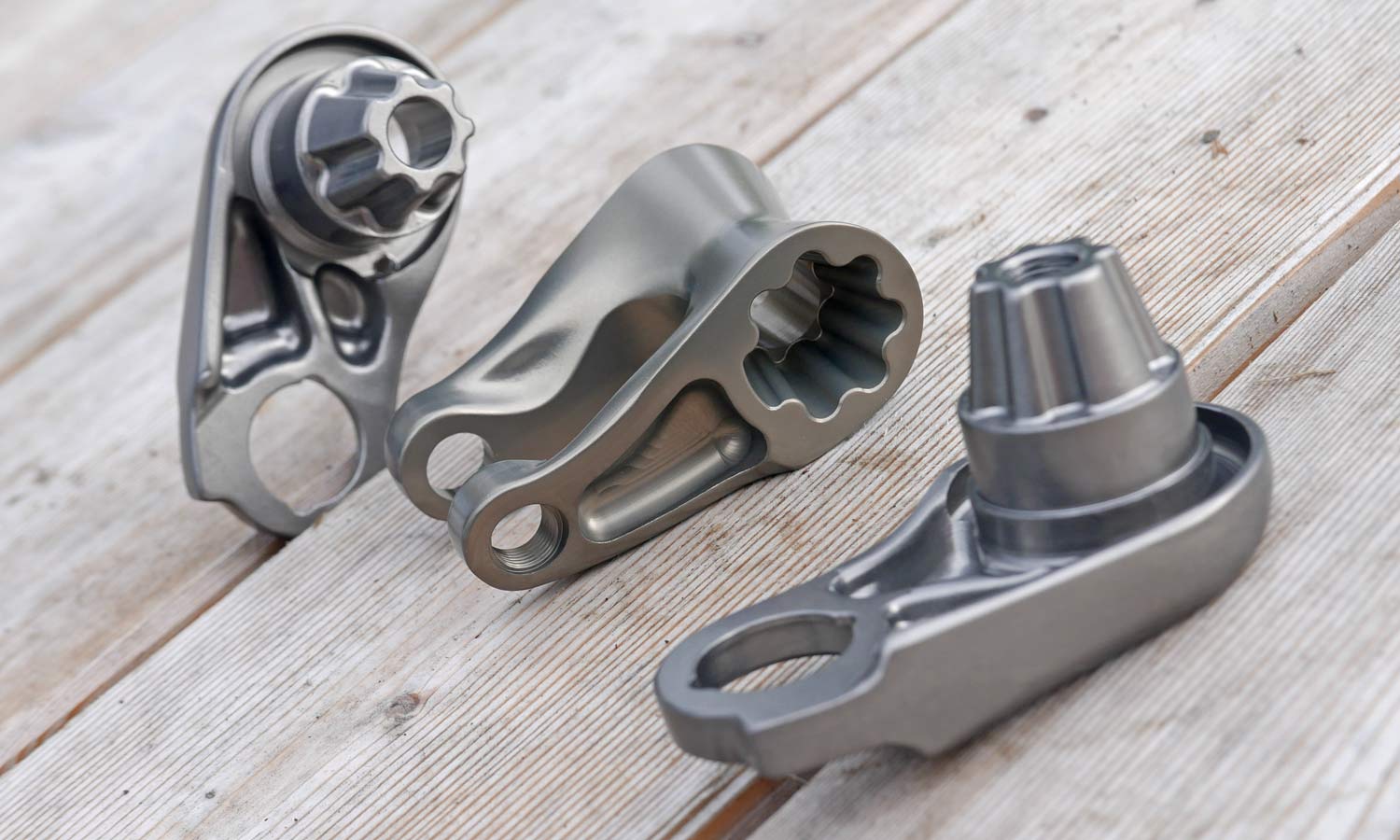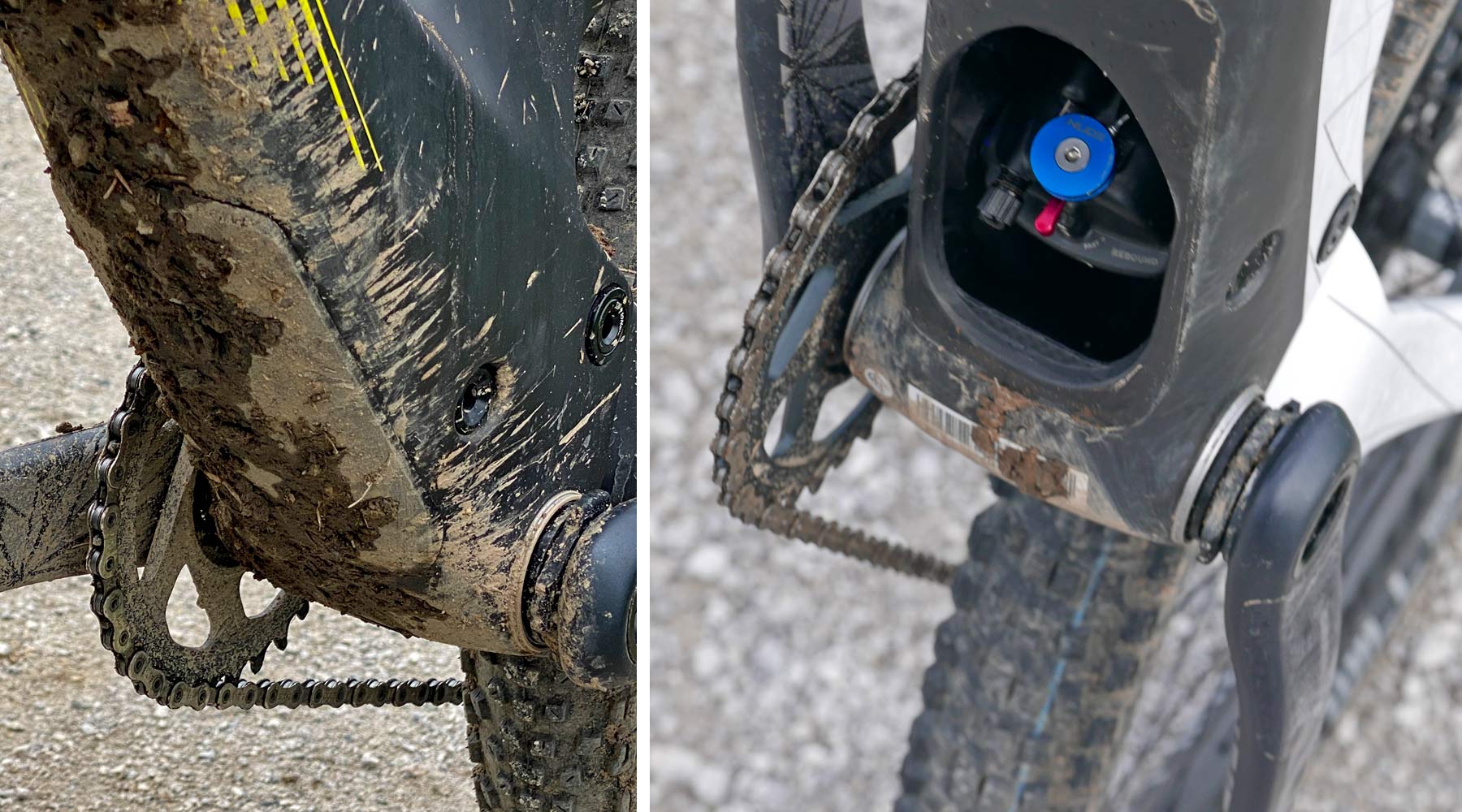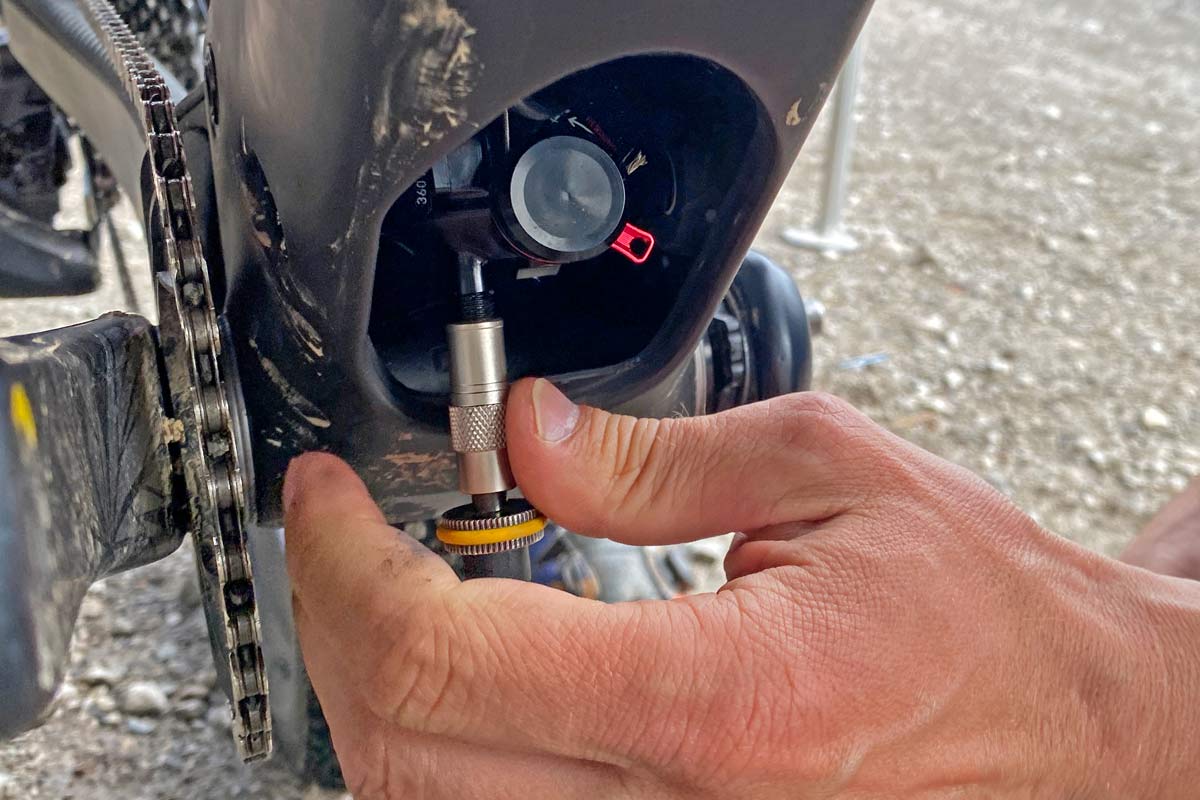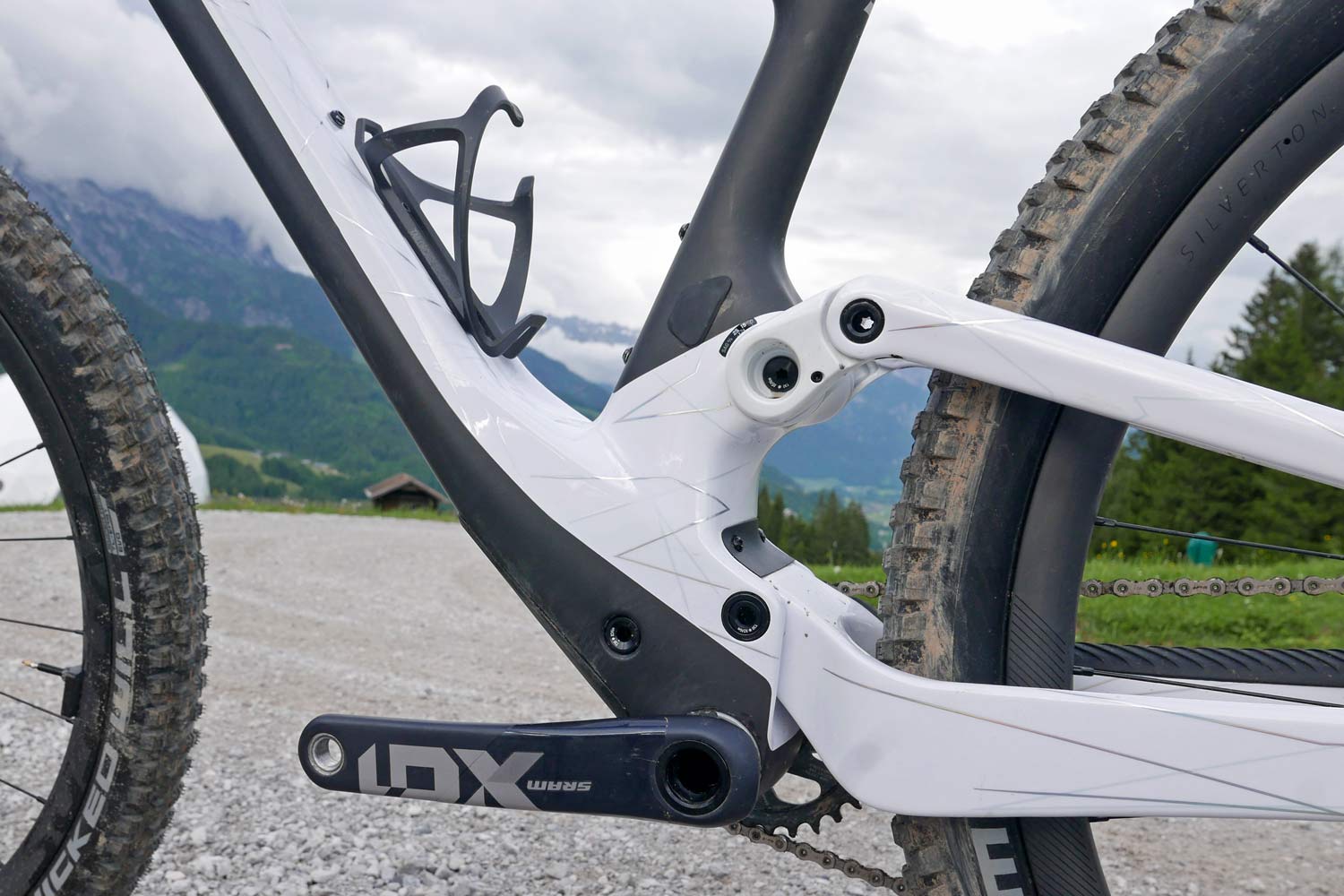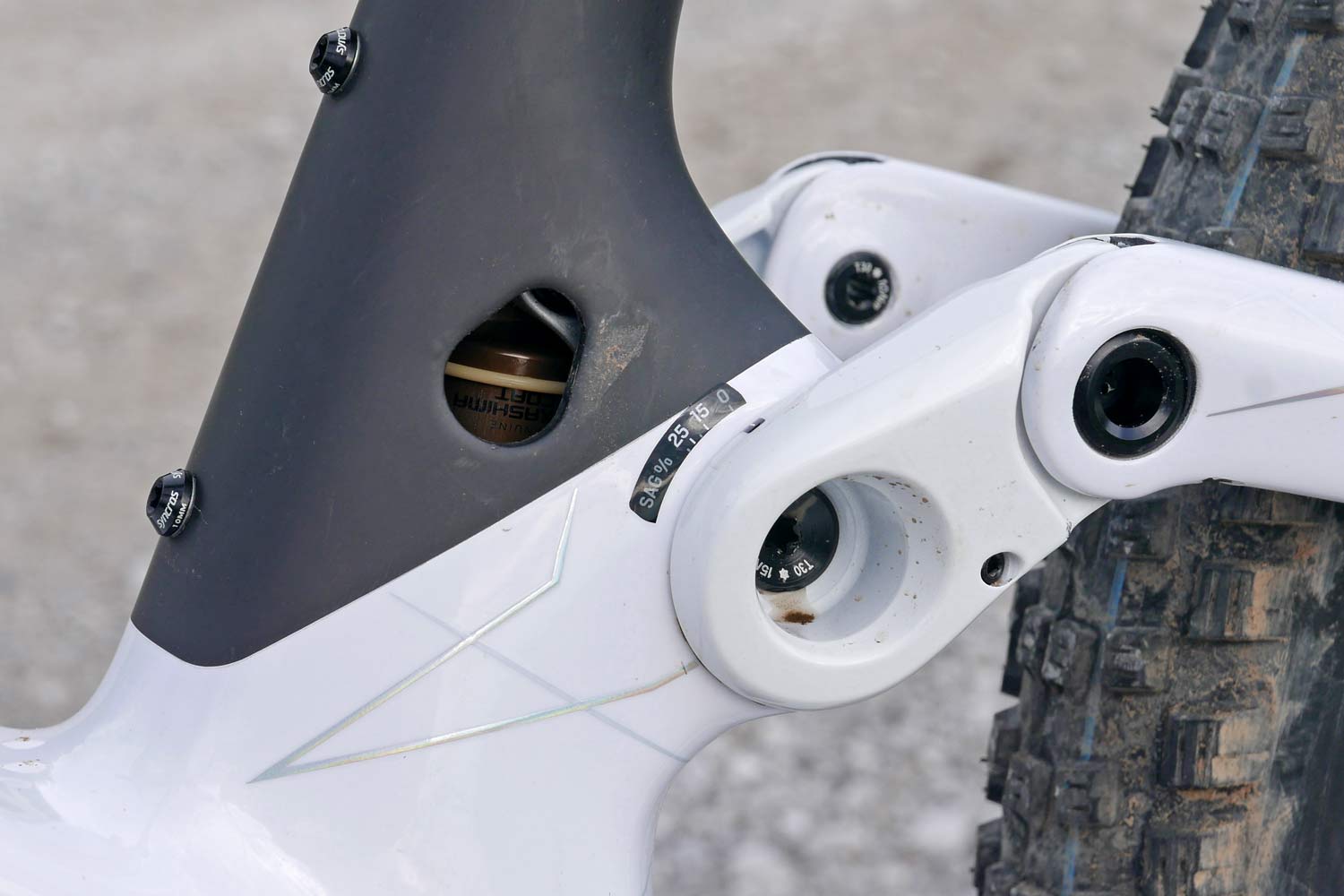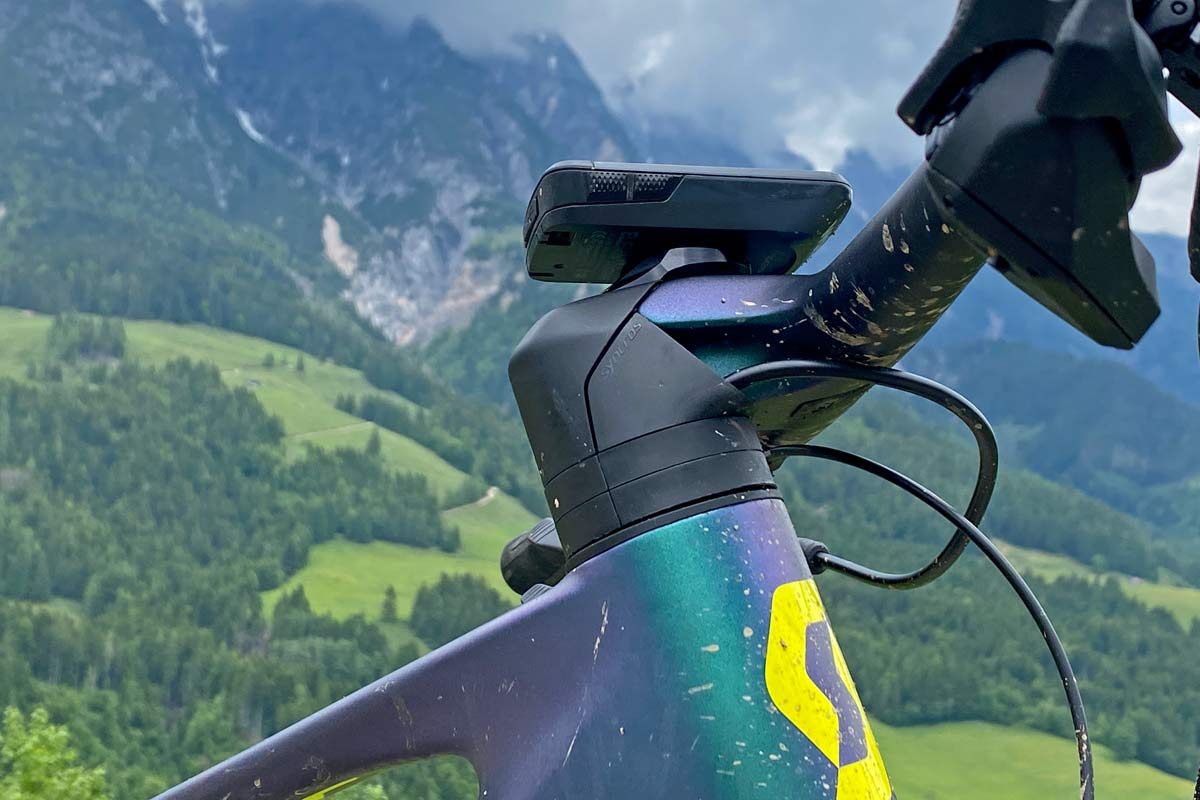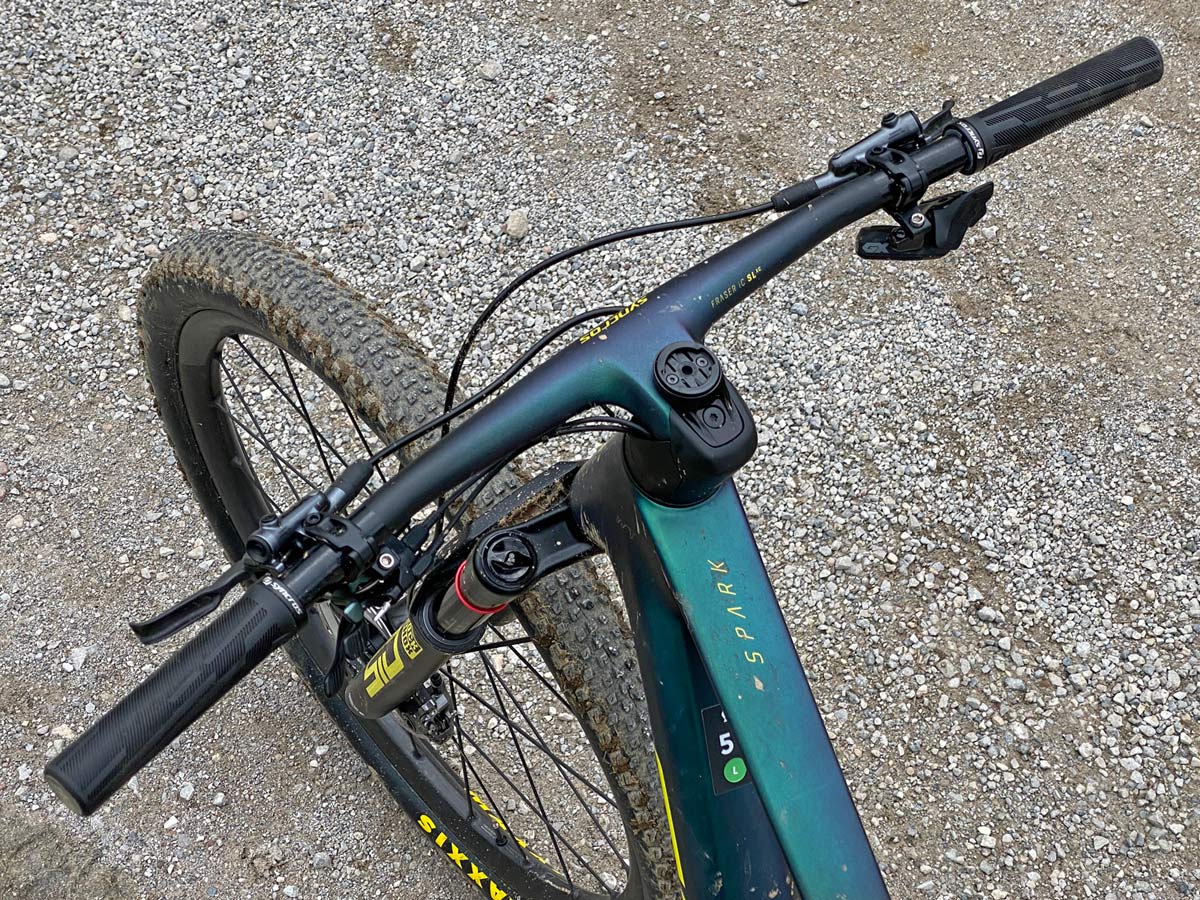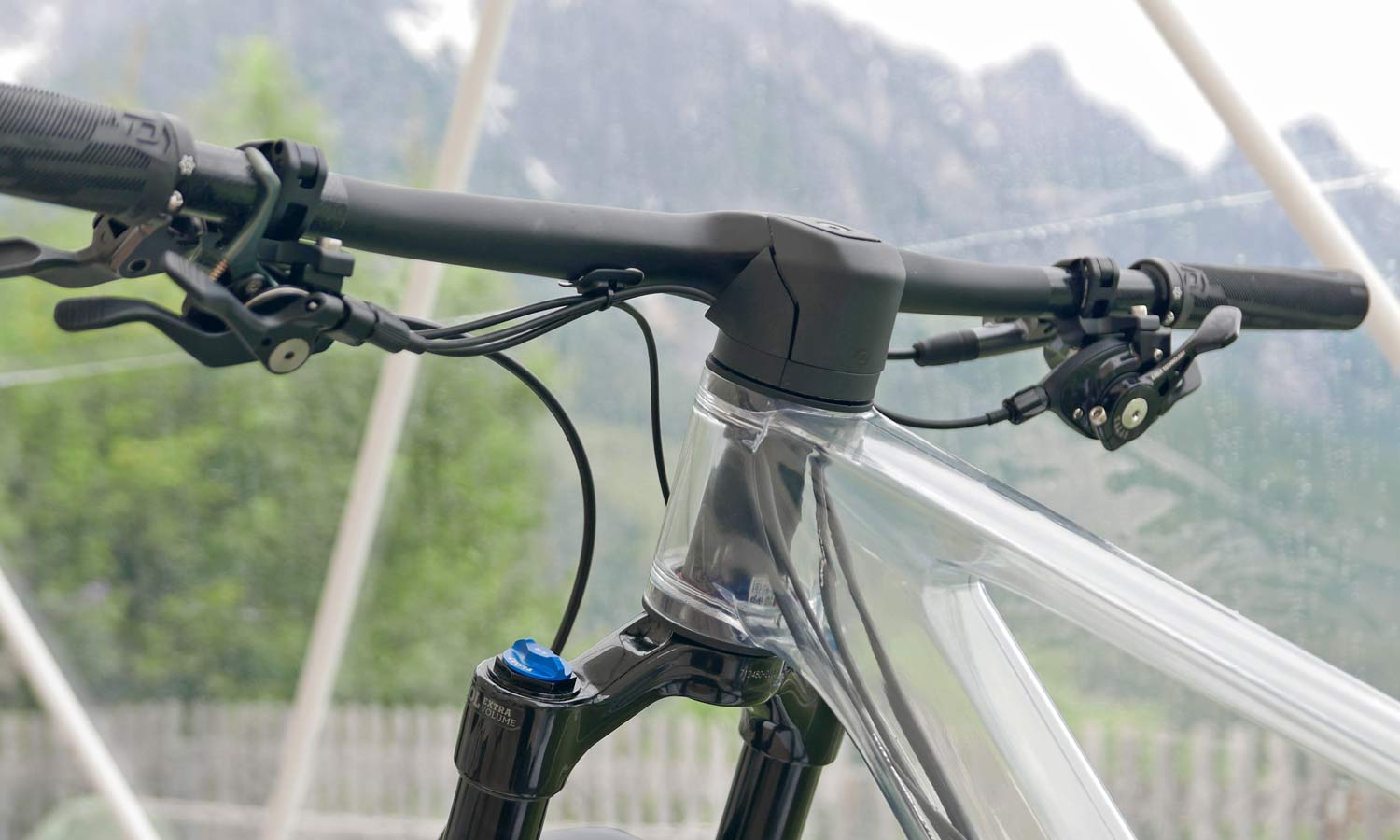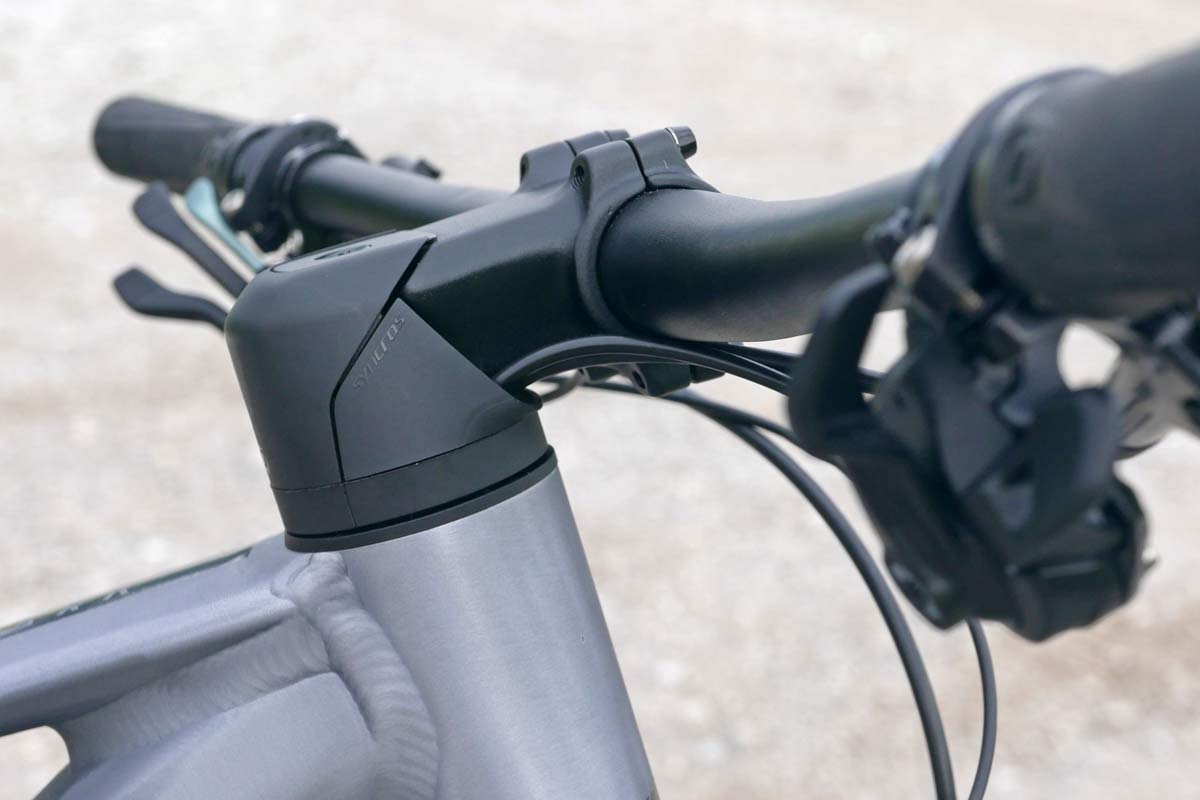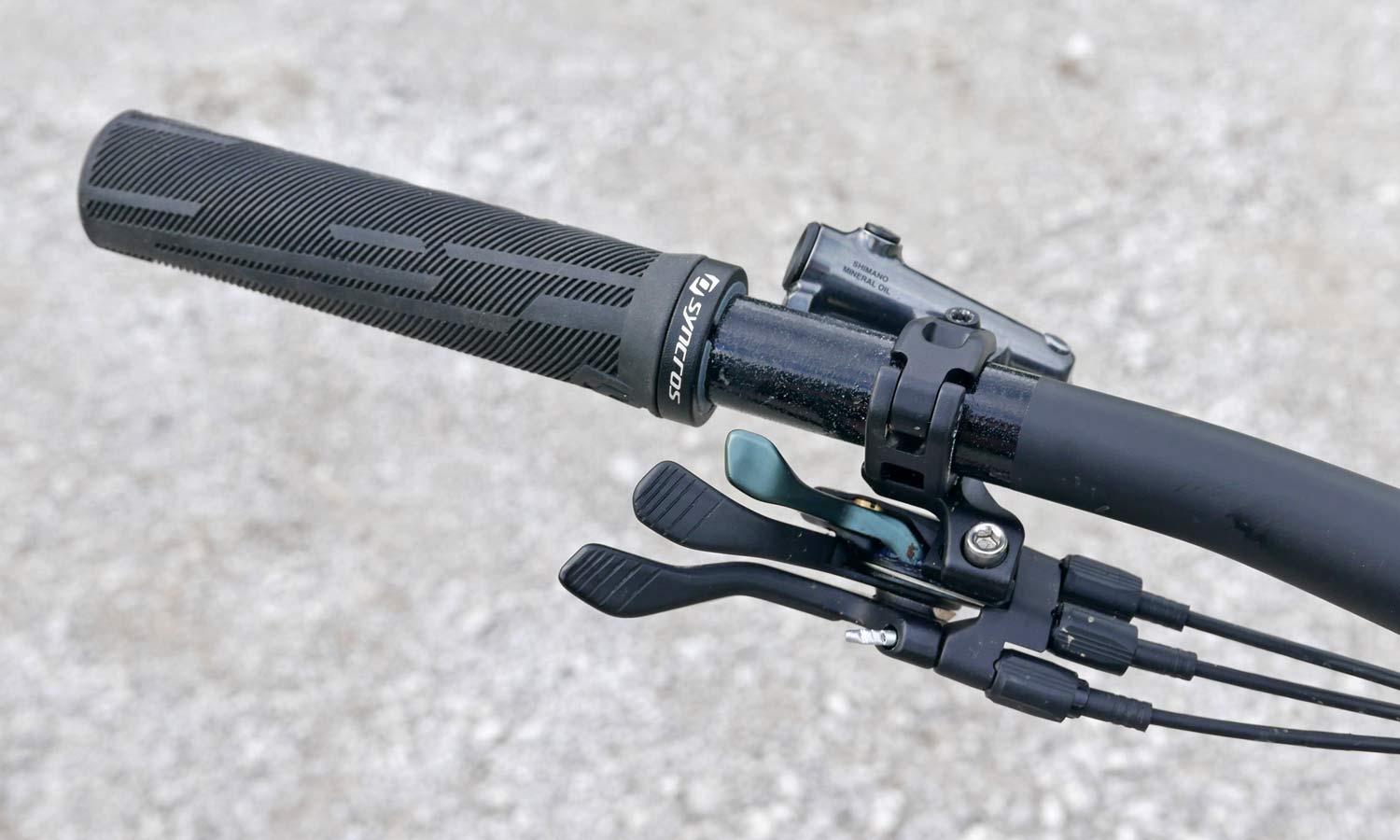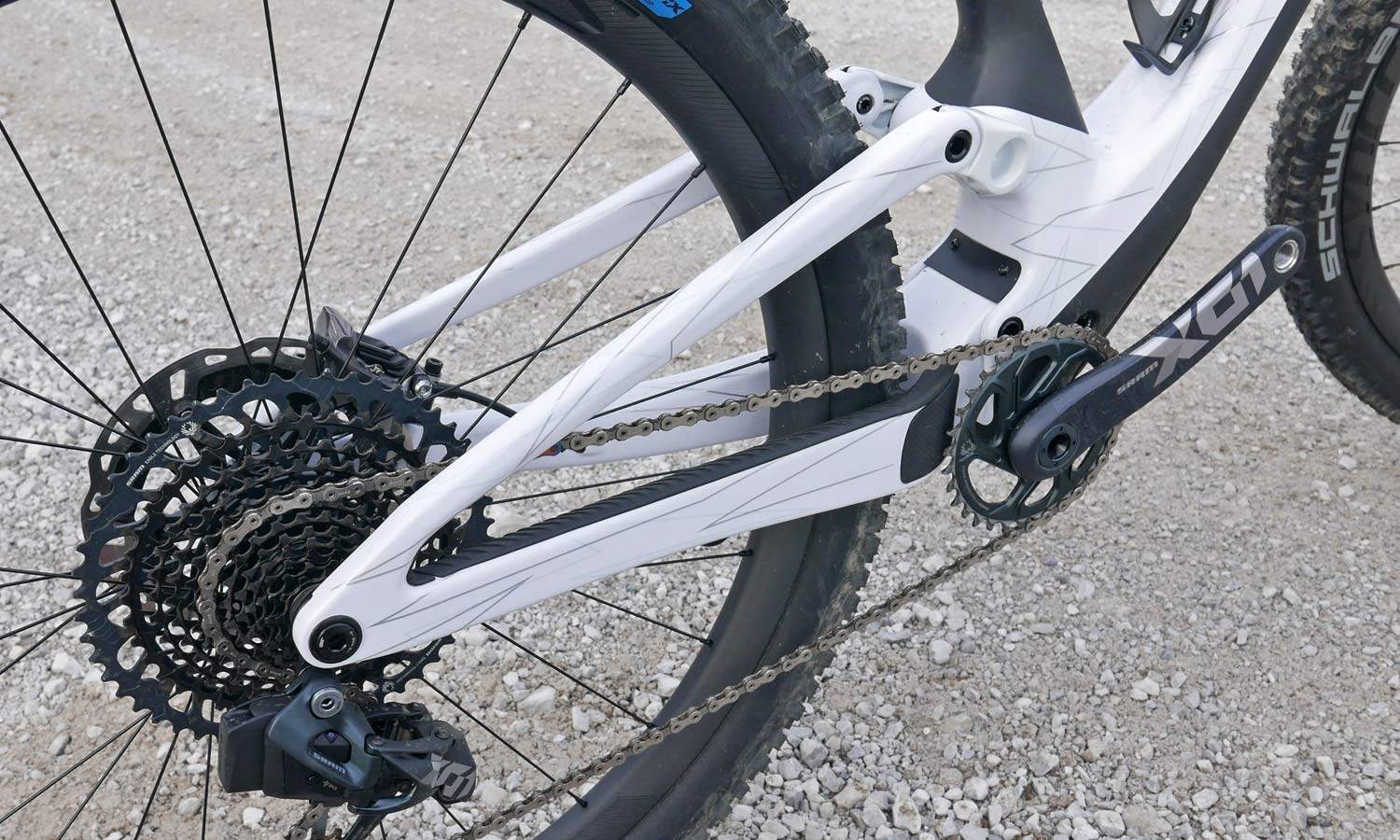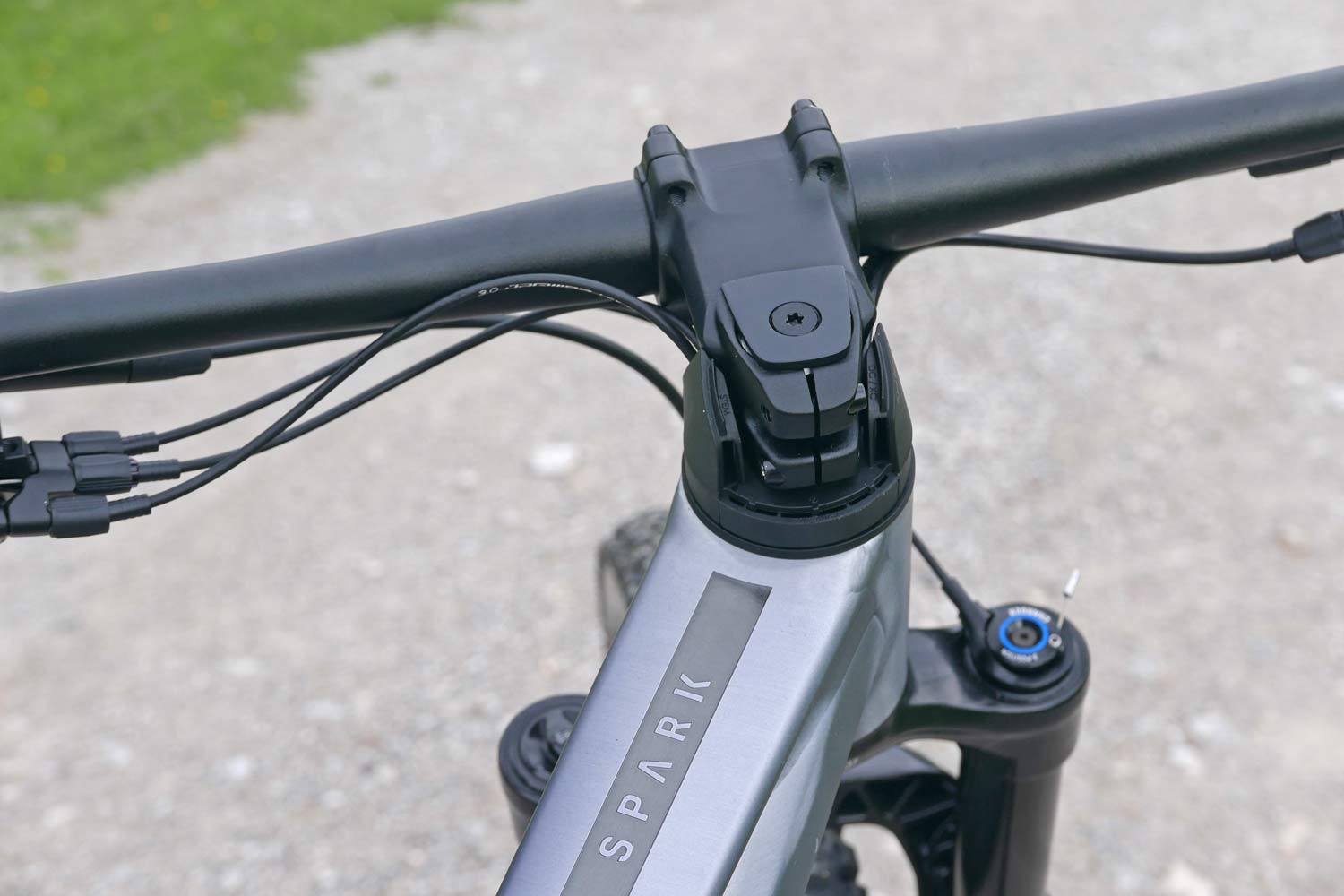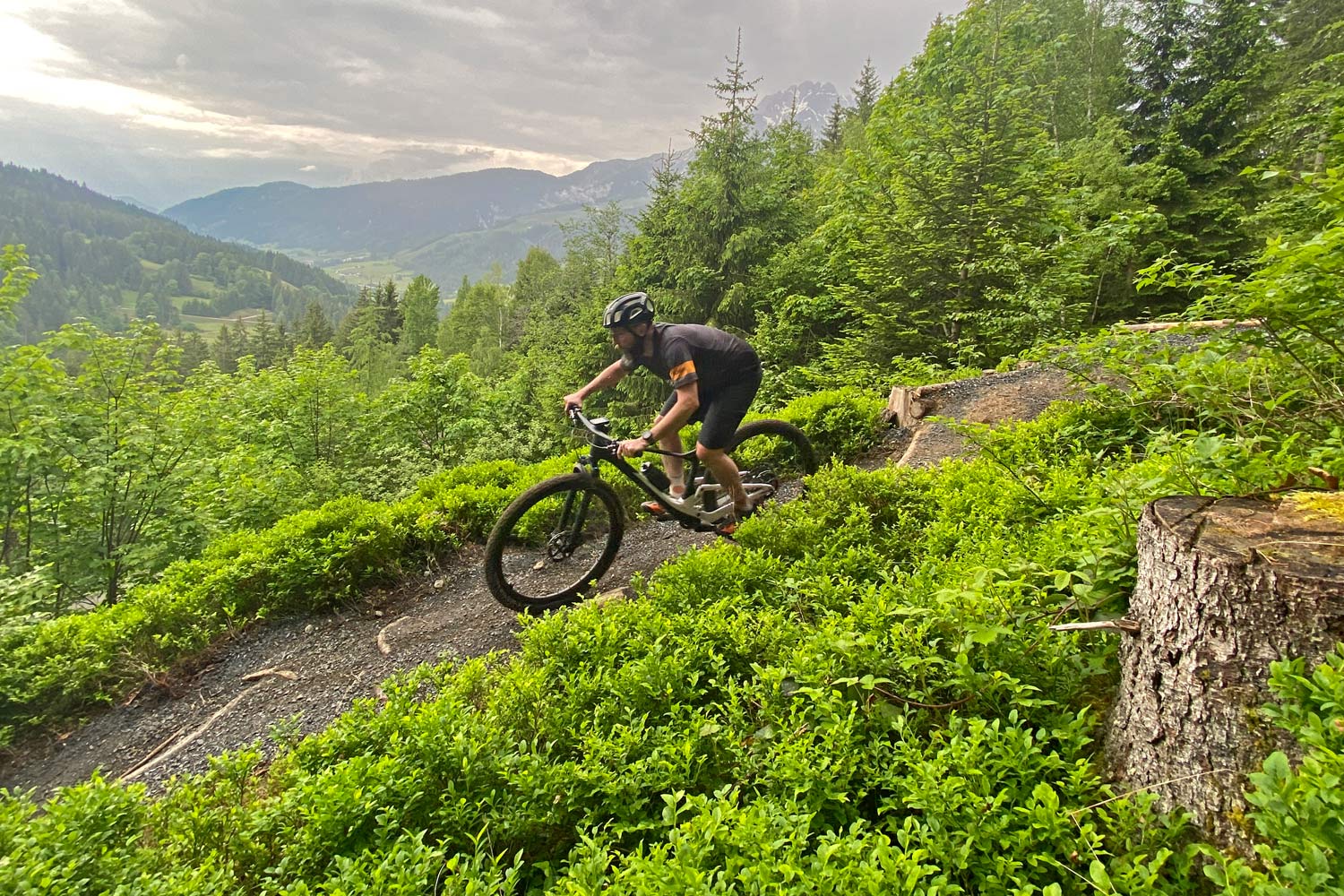The all-new 2022 Scott Spark gives a ground-up redesign to one of the winningest XC race bikes ever built, now slacker with longer travel and no rear shock in sight. The all-new 120mm travel cross-country mountain bike also takes a big leap in versatility, moving from racing modern technical XC tracks to fast trail riding with ease. Using the same frame, a headset flip-chip lets the bike transform from the cross-country racers’ Spark RC World Cup builds with 120mm forks, to slacker singletrack shredding Spark 900 down-country builds with 130mm forks…
2022 Scott Spark RC & 900 light, fully-integrated XC mountain bikes
Two years after buying Bold into the Scott family, there’s an all-new Scott Spark cross-country mountain bike ready for its World Cup racing debut this coming weekend.
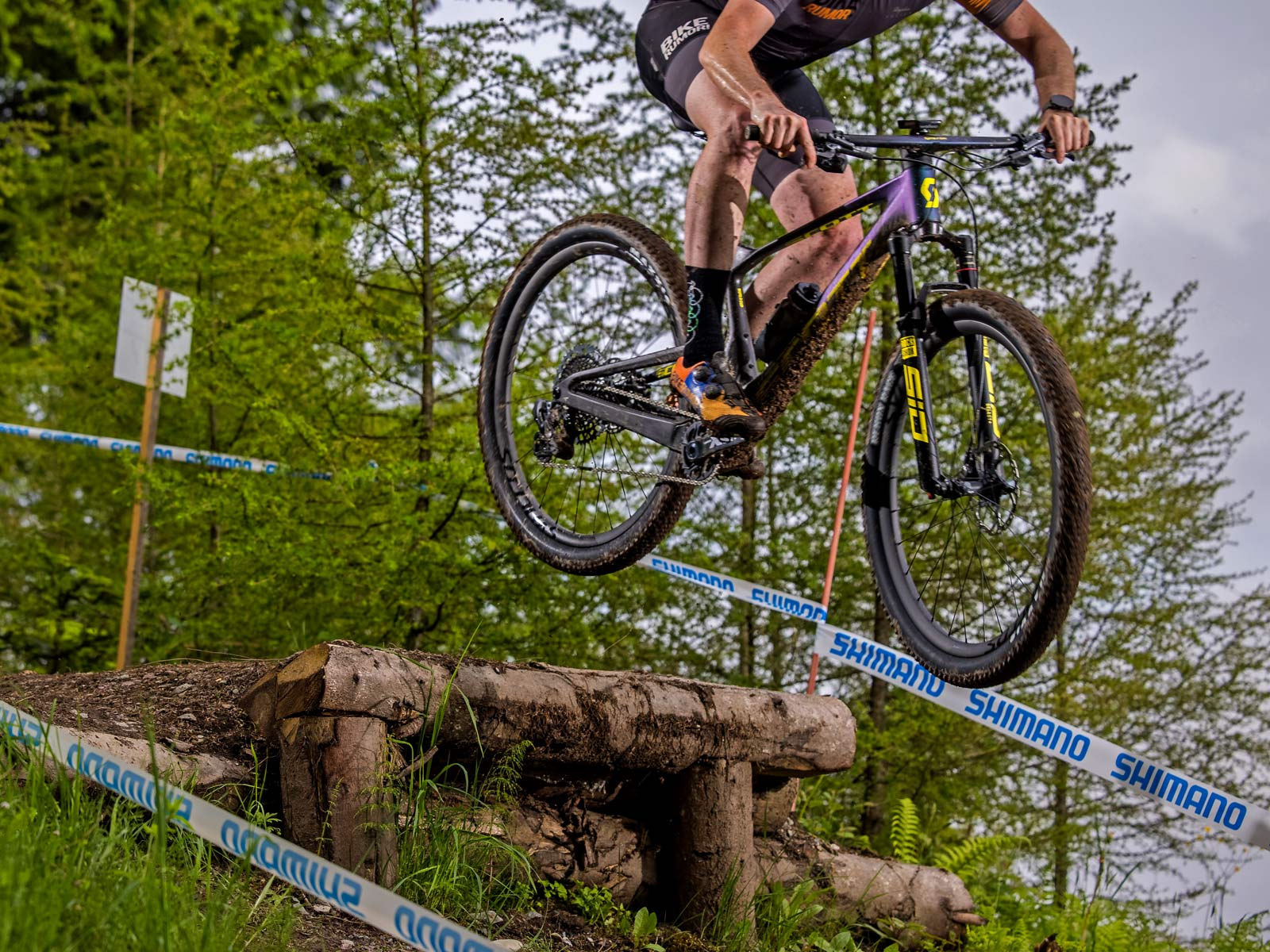
Adapting the same proven integrated shock layout from Bold’s longer travel all-mountain & enduro bikes, the newly integrated Spark promises to be every bit the race-ready bike Nino Schurter has proven it to be over the last decade, but now with longer travel, slacker geometry, a stiffer frame, and more deep integration to go faster on the more technically demanding race tracks.
And while the pros race on the lighter 120/120mm Scott Spark RC (above), there’s a slightly longer 120/130mm Scott Spark 900 trail bike for rocketing up and down your local singletrack.
So why change such a winning formula?
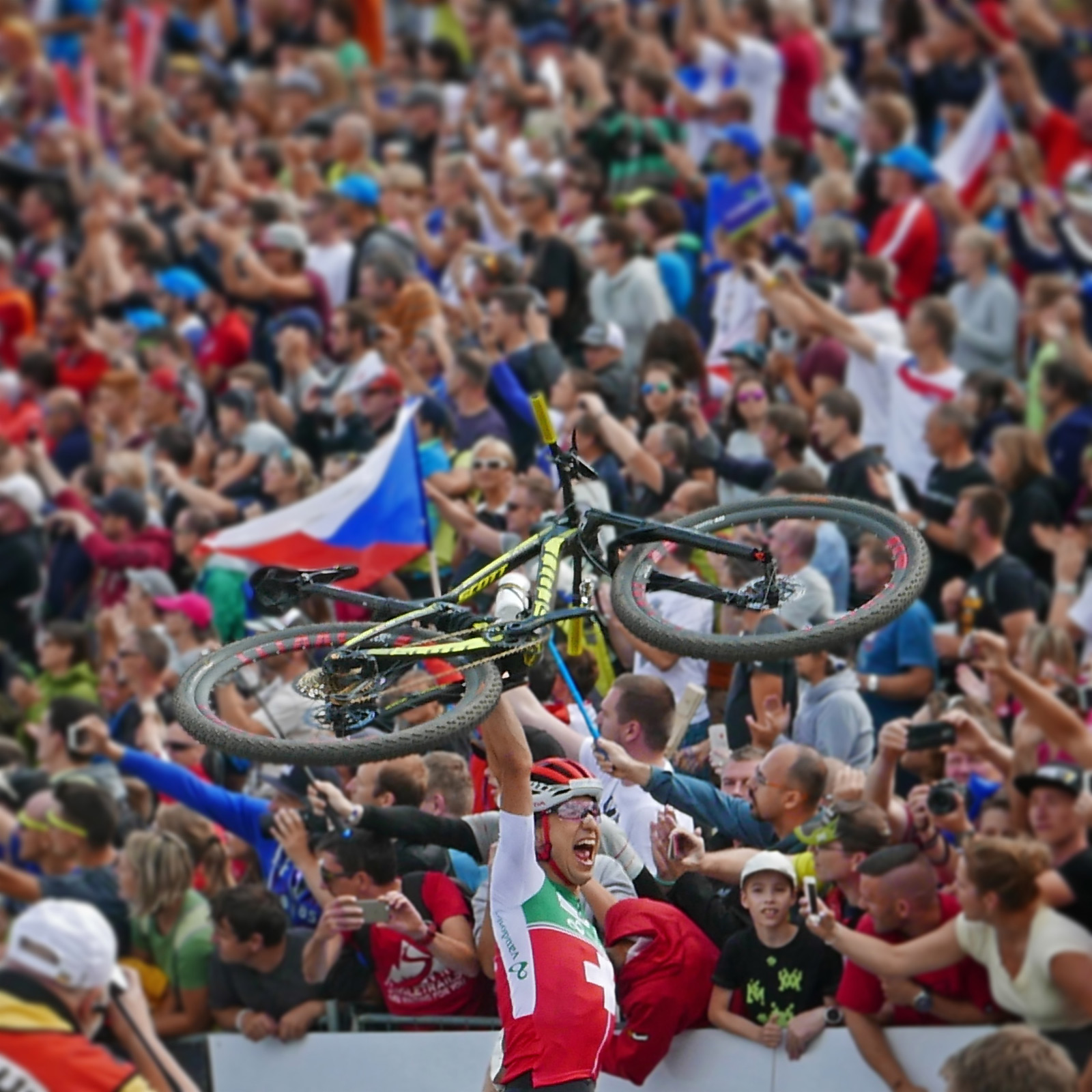
Why change a winning formula, when Nino has already won a lot on the previous Spark? He rode the last generation to 2016 rainbow stripes a week after it debuted, then World Champion titles again in 2017, 2018 & 2019 (plus five 2nd places this season). But behind the scenes, Nino had been asking for more travel to tackle ever-tougher XCO courses.
In fact, it seems he’s already been secretly racing for two seasons with custom links & shocks in his previous Spark to give him 120mm of rear wheel travel, and with SID forks bumped up to 115mm as early as his 2019 World Championship win.
Tech details
So now, on top of Nino’s extra travel, comes slacker geometry and the new frame integration…
Integrated suspension with Bold hidden shock
The first thing to know about the new integrated suspension is that as dramatic as it may look, it’s really not as different as it seems. Sure, there’s 20% more travel and you can’t see the shock. But the layout is the same proven high single-pivot with seatstay flex just in front of the rear axle and a linkage-driven vertical (upside down) shock. Linkage ratios and shock curves have been tweaked in the new design, but it’s still the same race-proven suspension.
For several years Scott had already been trying to figure out how to integrate the shock lower and inside their frame for improved performance & protection, and uncovering fellow Swiss bike maker Bold’s integrated suspension solution (and patent) spurred Scott to bring the small brand into their bigger company. Bold is still independently developing new bikes (new models expected this fall!), and Scott developed this new Spark completely separate of Bold.
The whole setup works simply by shifting the trunnion mount shock into the frame where the unsprung weight of the shock can move a bit lower (that’s also why Scott inverts the shocks)…
…and a unique 3-piece, splined rocker arm drives the shock inside, while connecting to the seatstays outside through a set of oversized, extra-sealed pivot bearings.
The result is a shock completely protected from the elements – no mud sprayed on or UV-light exposure to its sensitive slider & seals – yet still easily accessible with a large access port under the downtube for easy shock adjustment.
Scott says this configuration creates stronger, stiffer force distribution from the suspension into the widest, stiffest part of the frame at the bottom bracket. They even tested bikes back-to-back to see how reduced airflow might affect shock temperature & performance, finding no significant difference on the old & new Sparks.
And the framesets are light – a claimed 1870g for frame, shock & hardware on the top-tier HMX-SL carbon frames, essentially saving weight over the previous bike when you factor the newly integrated components in.
Text & line indicators on the non-driveside seat tube pivot make setting sag easy. And a small removable grommet there also makes it easy to check how much travel you’ve used. Scott worked with both Fox & X-Fusion to get special, brighter o-rings that were easier to see like RockShox’s red rings.
Faster, slacker, adjustable geometry
With the bump up to 120mm of rear wheel travel for both XC and trail, both RC & 900 bikes get more aggressive geometry. Beyond more travel at both ends, even the XC racing model is now more than a degree slacker at a 67.2° head angle, with a 2-3 degree steeper seat angle to around 76° depending on size, plus at least 12mm longer reach.
Comparing the old vs. new pre-sag figures, with more travel & bigger tires the new bikes sit quite a bit higher, both at the bottom bracket and at the bars. But for the most part riders will be able to get the exact same fits on the new bike. Chatting with Nino about his race setup, he actually brought his bar stack down ~4mm even with the overall taller bike.
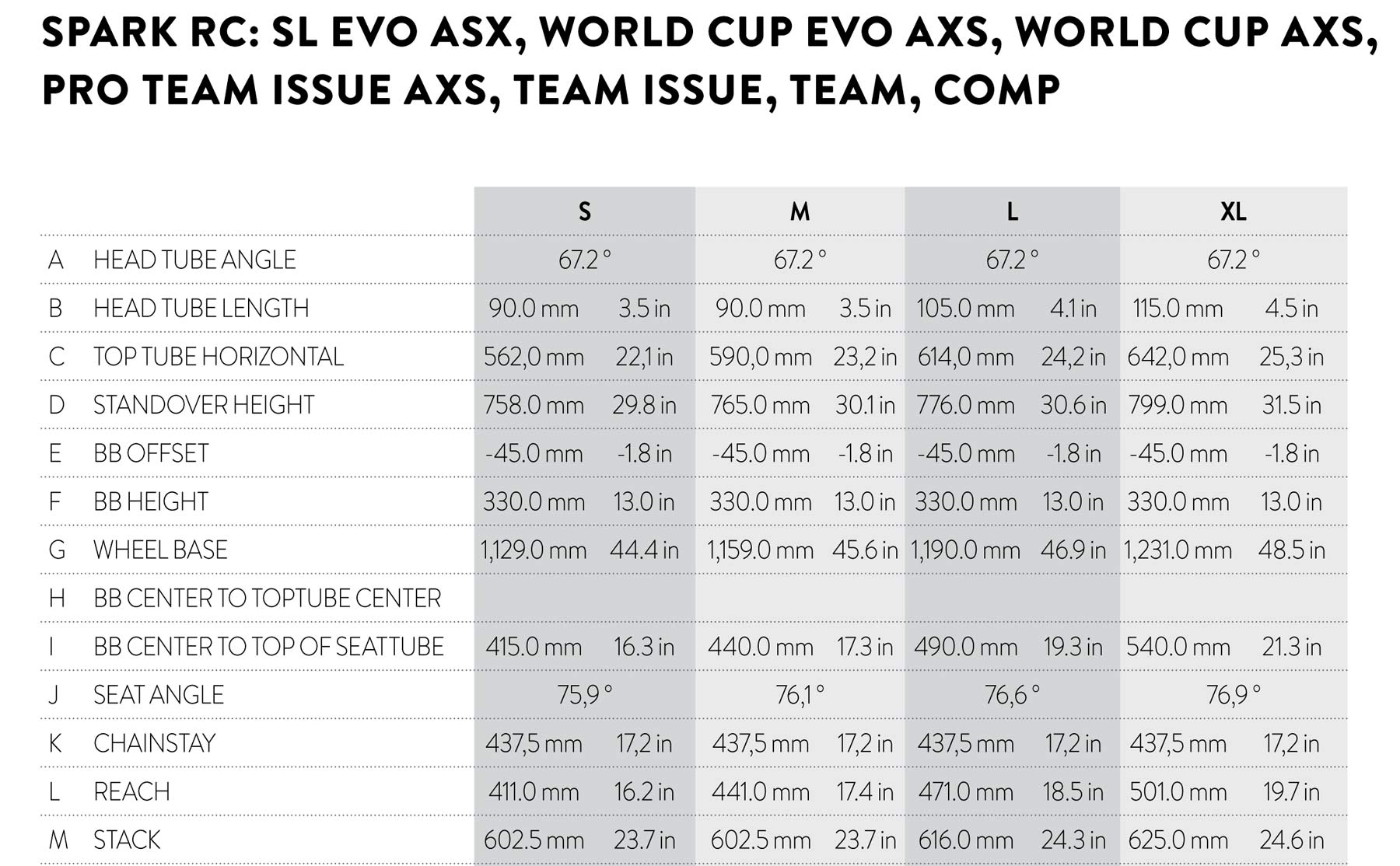
Geometry is really the key thing here that separates the XC-racing Spark RC models from the trail-oriented Spark 900 models. Both bike styles share the exact same frame, but a set of 2-position headset flip-chip cups allows you to slacken the head angle a further 1.2° from the WC to 900.
Add in the extra 10mm of fork travel for the 900 bikes, and the end result is a bit more at 65.8° for the trail bikes. (A middle 0 offset headset will also be available separately, in between the standard -0.6°/+0.6° flip-chip version.)
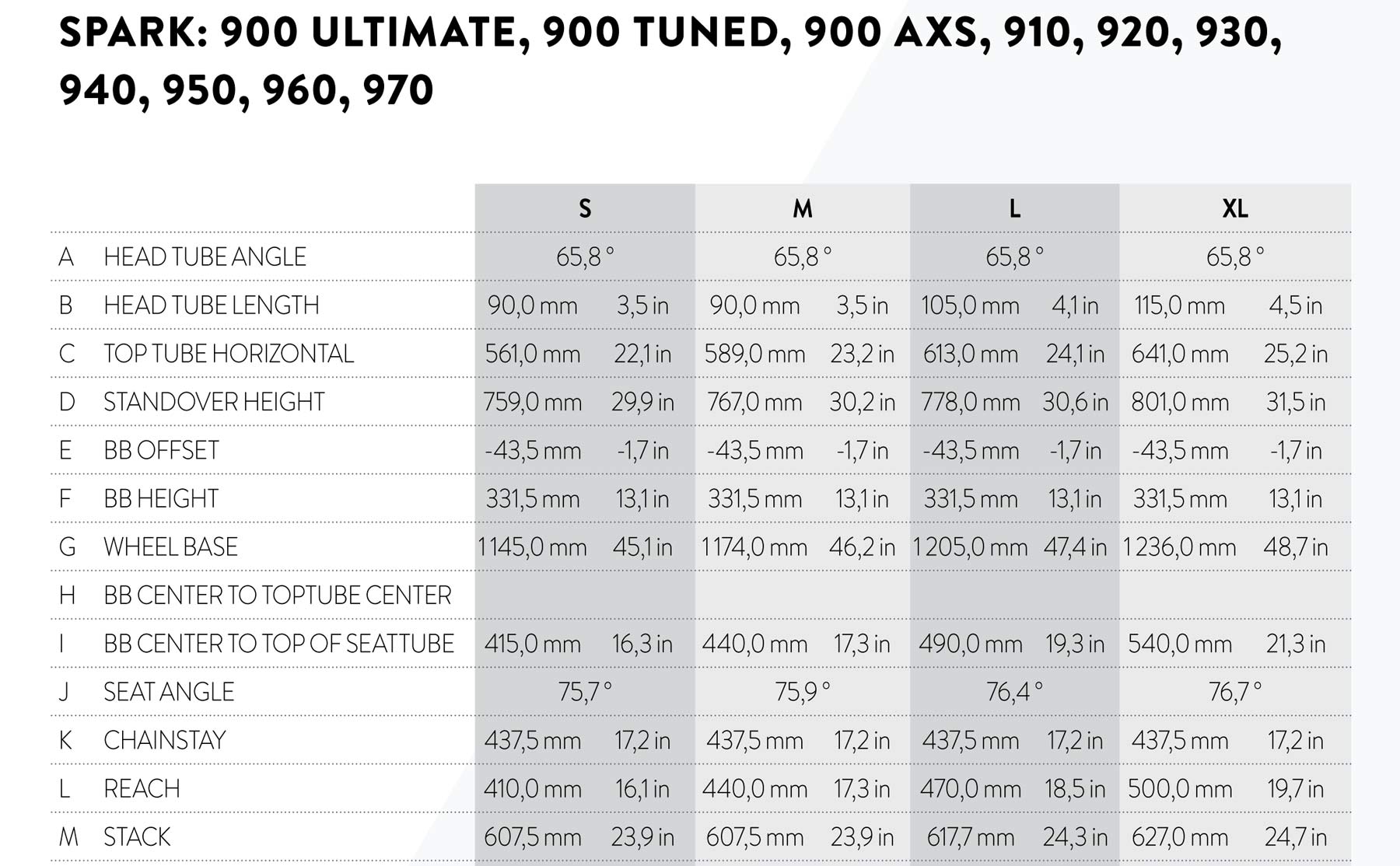
The other differentiating factors between the two versions are smaller, more linear rear shock for the RC cross-country bikes and slightly larger-volume, more progressive shocks for the 900 down-country bikes. But essentially, a new Spark 900 buyer could reduce their fork travel with an internal spacer and flip their headset around to get the exact geometry of the XC bike.
Integrated routing with Syncros bars, stems & 1-piece cockpits
Extending the integration up front, Syncros has new 1 & 2-piece cockpits for clean internal routing setups. All shift, brake, and suspension control cables get routed through an oversized upper headset cup straight into the frame.
But the cables essentially enter on the sides of the ‘stems’ for smoother cable bends and easier accessibility, with clip-on cable shrouds keeping it all tidy and relatively protected from the elements. In any case, the system is more open than usual, so Scott adds extra seals to the already-sealed cartridge bearings in the headset and throughout the bike.
There are tons of new integrated internal routing cockpit options from Syncros depending on the pricing level, from negative rise & 74cm flat Fraser IC bars for the XC RC bikes to mini-rise 76cm bars for the trail 900 bikes. Pick from 1-piece carbon or 2-piece alloy, there will even be compatible models of the Hixon trail bars for more all-mountain cockpit setups (and we’d guess more integrated cable routing on future longer-travel Scott mountain bikes!)
A new triple TwinLoc 2 (TripleLoc?) remote adds a dropper seatpost control to the same proven Scott lockout lever control both front & rear suspension. Now you get open descending, slightly reduced travel traction control & full lockout modes at your fingertips, plus a dropper remote in one. We’ve ridden quite a bit with it, and were pleasantly surprised how easy it was to adapt to, without any accidental lockouts or post drops.
Other details
There’s tons more little, well-thought-out details on this bike so it’s easy to gloss over them. The new bike shifts to a 55mm chainline that give room for up to 2.6″ tire clearance AND the massive 40T chainrings that Nino races on around the widely-space PF92 bottom bracket.
The bike gets integrated rubber frame protection adapted from Scott’s gravity bikes to keep quiet. The removable rear-axle QR lever no includes T25, T30 & 6mm hex wrenches to adjust almost everything on the bike.
2022 Scott Spark – Pricing, options & availability
There are literally too many individual models to list, but what’s interesting is that they do come at all pricing levels thanks to five different frameset option: full carbon HMX-SL (1870g), HMX (1999g), HMF (2150g), an HMF front end paired to an alloy rear (2590g), and the full alloy frameset (3290g) – all medium weight claims with shock & hardware.
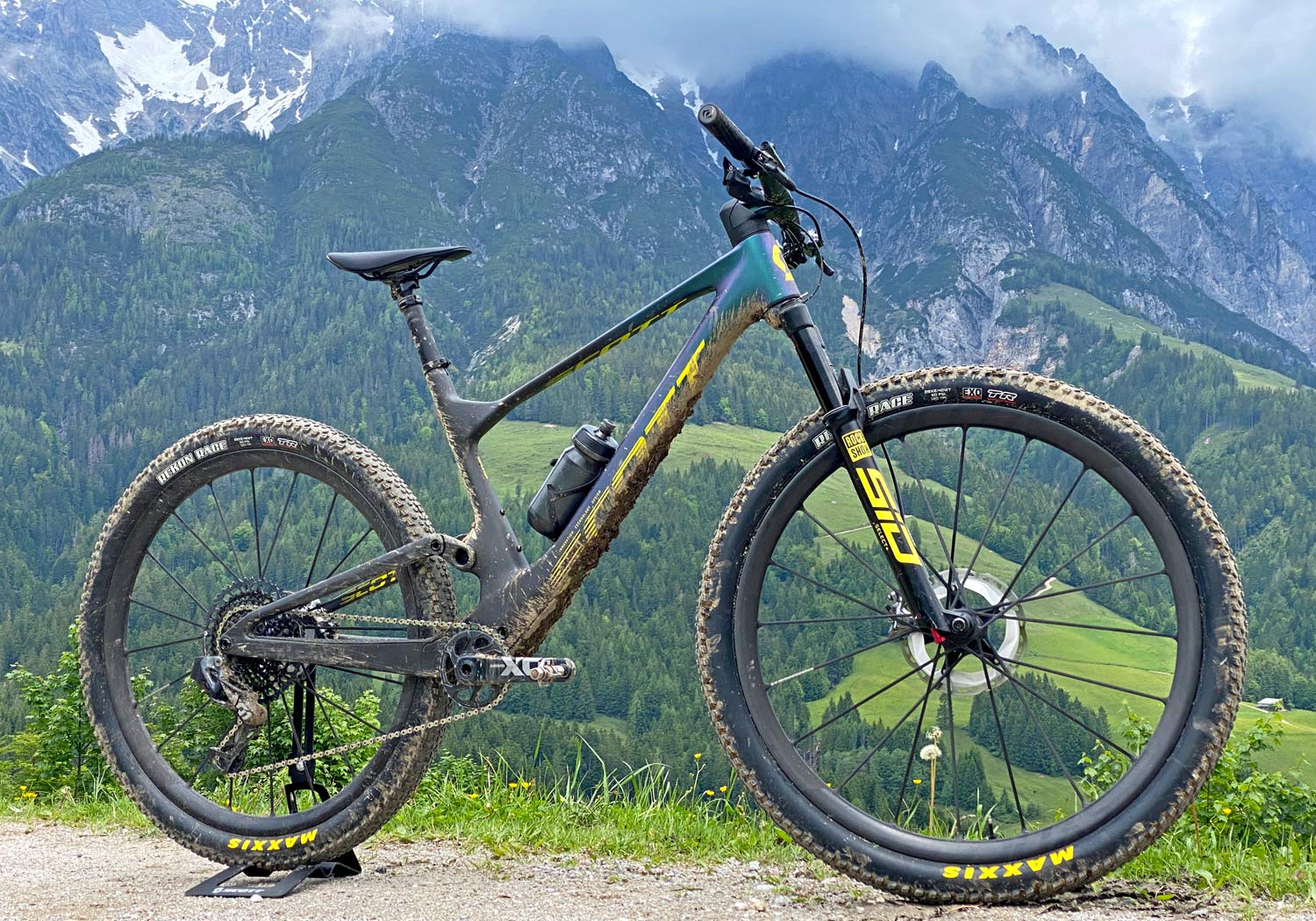
There are 9 possible Scott Spark RC cross-country builds (all carbon only), 13 possible Scott Spark 900 series down-country builds, 1 Contessa Spark RC carbon XC build & 3 Contessa Spark 900 series trail builds with women-specific contact points and lighter suspension tunes.
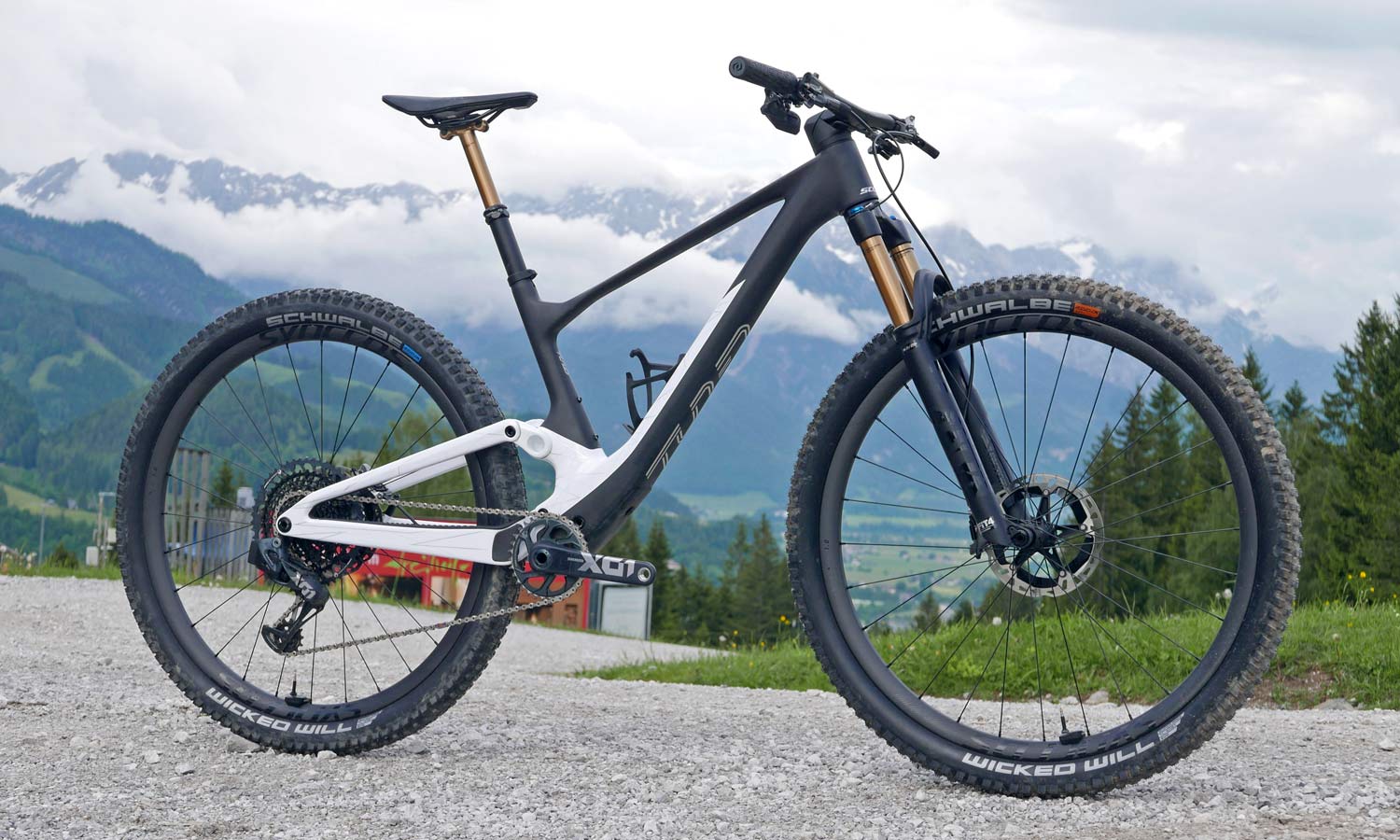
Actual bike availability of the 25 possible Spark builds will vary from region to region, with Scott launching test fleets of the new bikes this week in several locations around the globe. Real shop availability could be just a matter of weeks in some shops and builds. But Scott assured us that while the ultra-premium bikes will be harder to get ahold of, their upper-middle-tier bikes should be available from your local Scott dealer within the next couple of months.
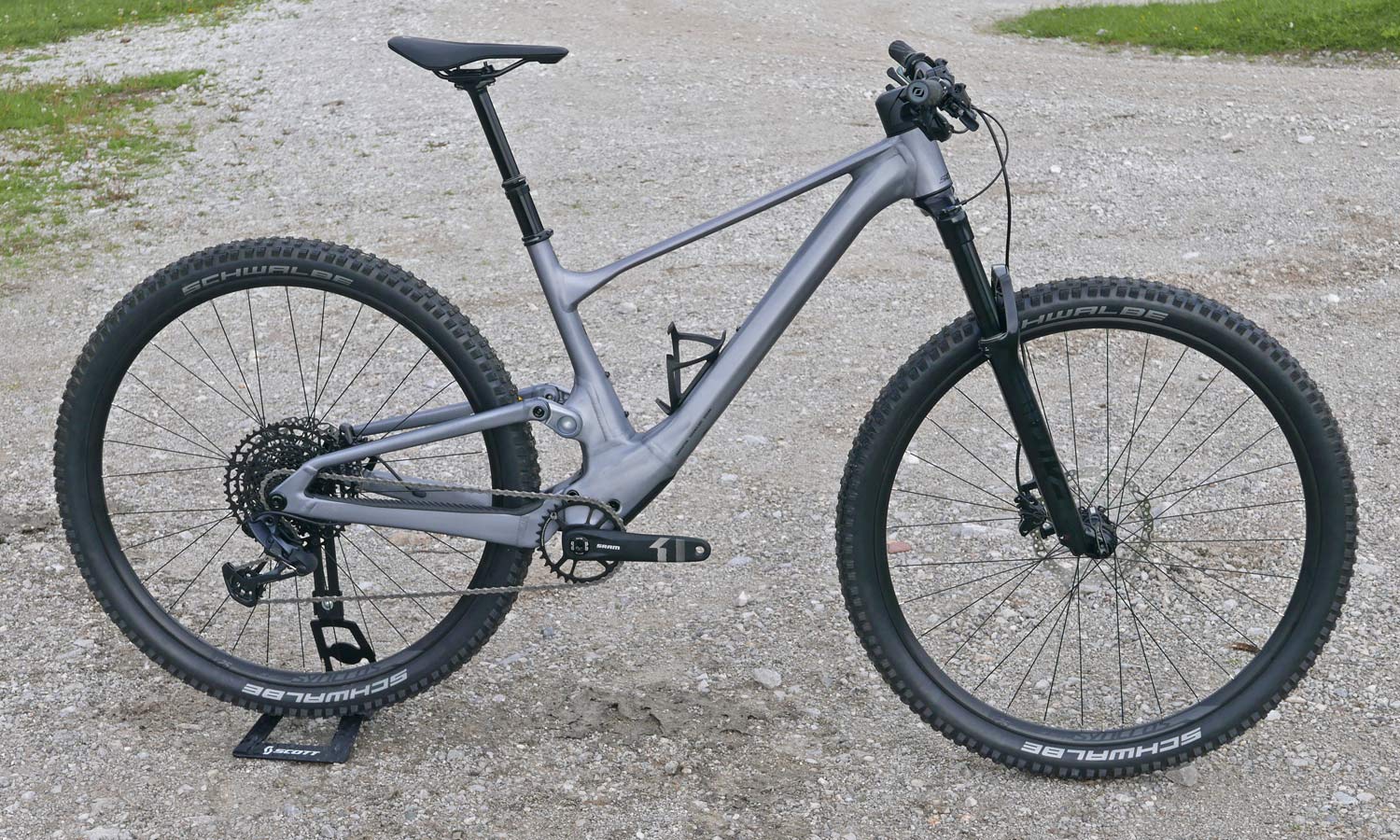
So, it’s time to reach out to your local shop if you are feeling the need for a new longer-travel Scott XC race bike or shorter-travel fast trail bike!
All-new Scott Spark – First Impressions
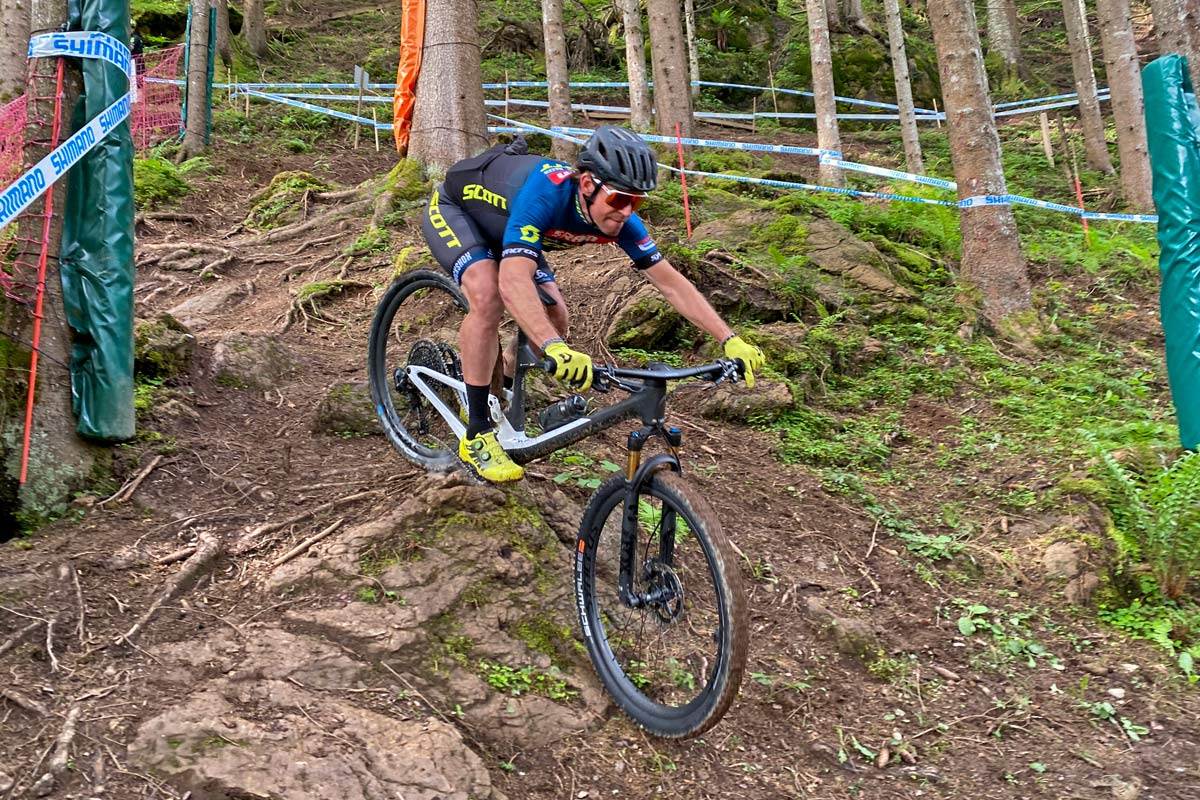
We’ve had a chance to put in a few solid rides on the Scott Spark RC World Cup AXS cross-country build, and on the Scott Spark 900 Tuned AXS down-country builds, both on the gnarly terrain of the Leogang UCI XCO World Cup course these past couple of days.
With super steep climbs and sketchy, bordering on DH descents, both iterations have proved to be supremely capable, and greatly benefitting from the longer 120mm travel & slacker geometry.
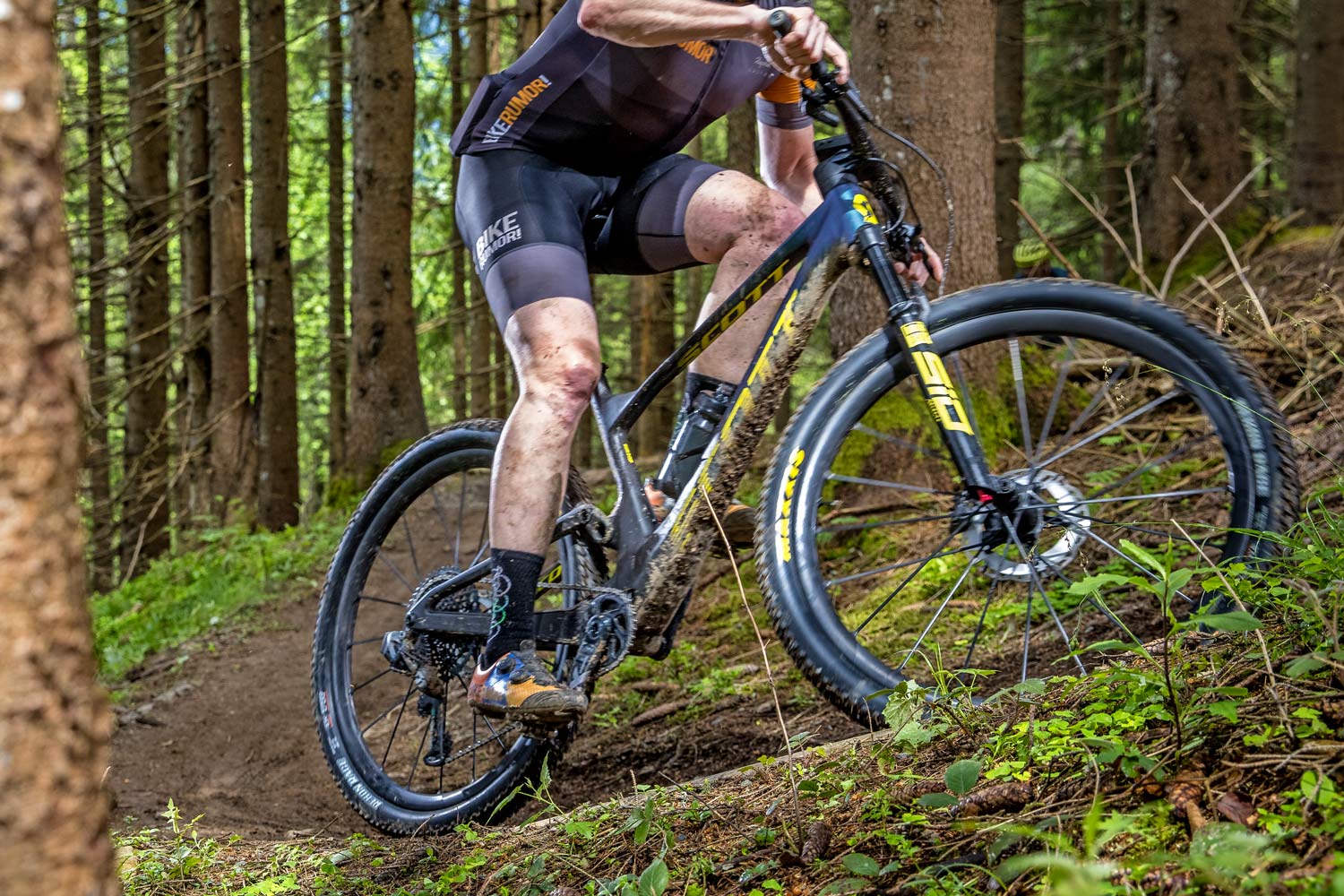
Using the TwinLoc (TripletLoc?) really makes these bikes shine, where you get plush, controlled descending, grippy but efficient climbing over loose terrain, and stiff full-lock for smooth steep climbs. Swapping from XC to trail tires makes either of these builds super capable, but I’m probably most impressed that the 900 series bike climbs virtually the same as the slightly less aggressive RC.
Here’s a video overview of the new bike with ride footage:
Stay tuned for more detailed First Ride reviews of these two new Sparks…
